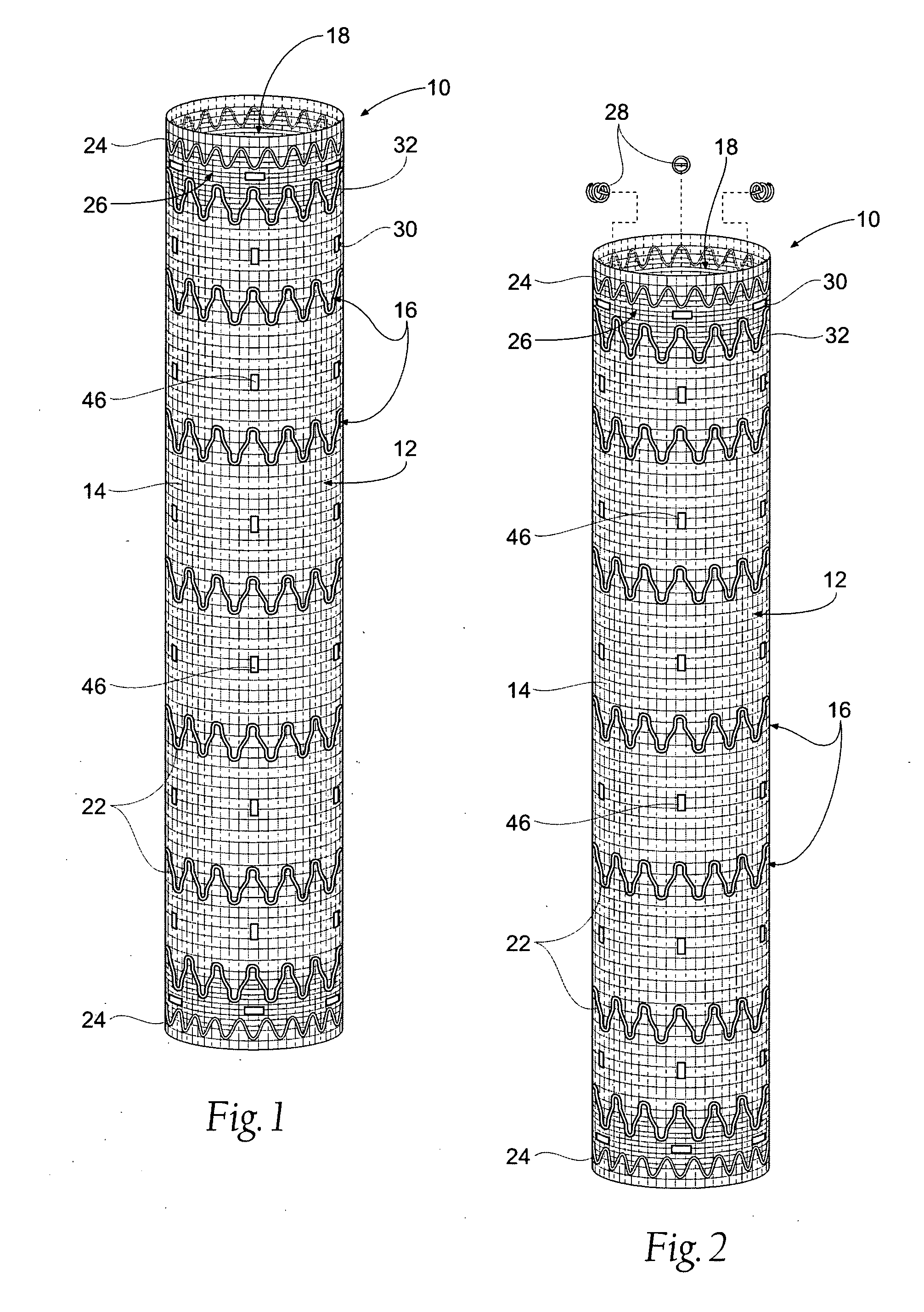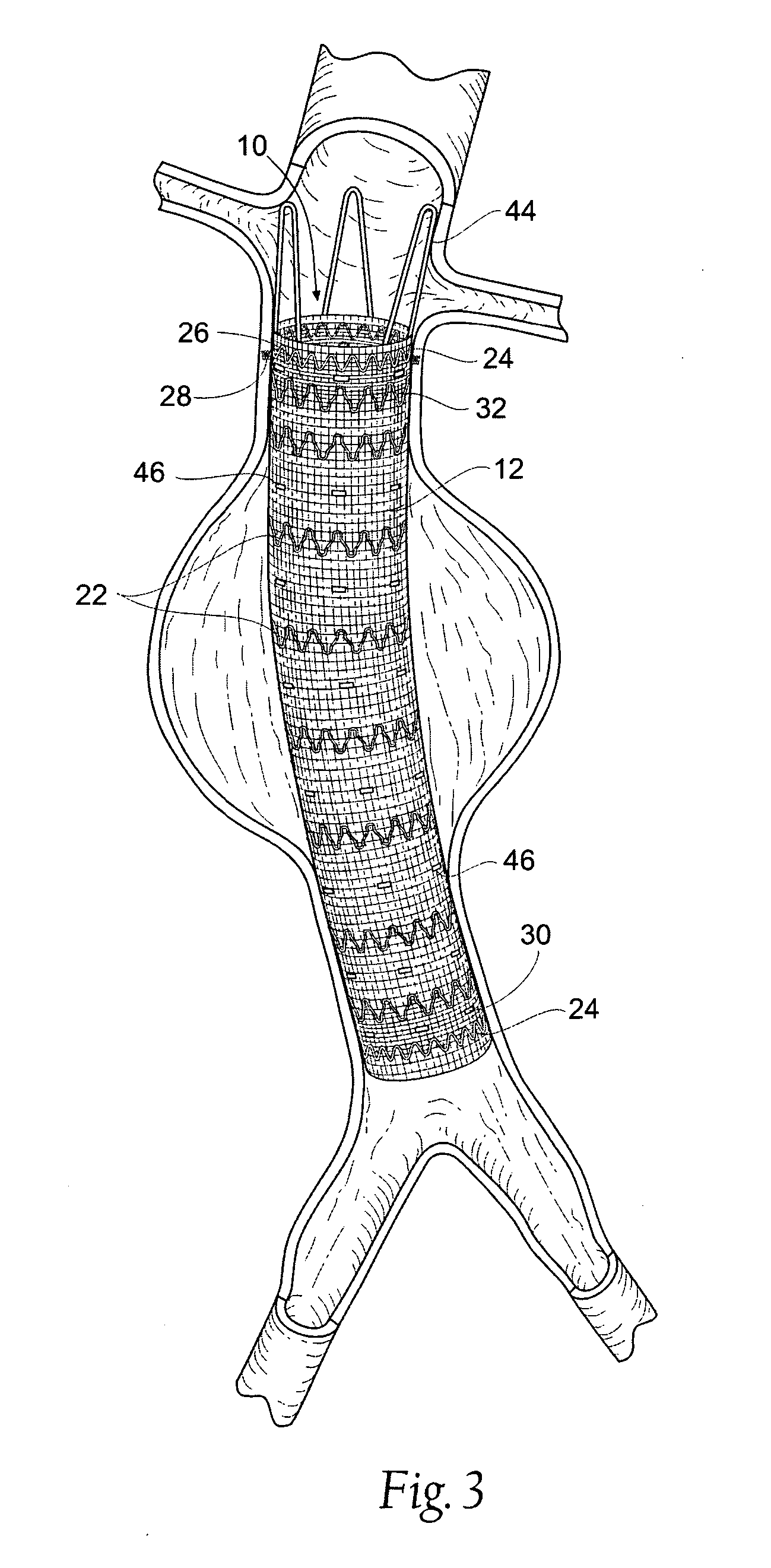Systems and methods for attaching a prosthesis within a body lumen or hollow organ
a technology of lumen or hollow organ and prosthesis, applied in the field of prosthesis, can solve the problems of causing aneurysm formation, affecting the function of prosthesis, and affecting the function of prosthesis, and achieve the effects of reducing the risk of rupture, and improving the quality of li
- Summary
- Abstract
- Description
- Claims
- Application Information
AI Technical Summary
Benefits of technology
Problems solved by technology
Method used
Image
Examples
Embodiment Construction
I. Prosthesis
[0056] A. Structure
[0057]FIG. 1 shows a prosthesis 10. The prosthesis 10 serves to repair or reinforce a region of a vessel wall or hollow body organ which has been weakened by disease or damage.
[0058] In the illustrated embodiment (see FIG. 1), the prosthesis 10 comprises a tubular trunk 12. The trunk 12 is sized and configured to fit within a targeted region of a hollow body organ and / or a blood vessel. The targeted region is selected on the basis of certain anatomic characteristics. These characteristics include a weakened conditioned caused, e.g., by disease or damage.
[0059] The trunk 12 forms a generally cylindrical structure with an open interior lumen 18. In the illustrated embodiment, the trunk 12 includes a prosthetic material 14 supported by a scaffold 16. The prosthetic material 14 is selected on the basis of its biocompatibility, durability, and flexible mechanical properties. The material 14 can comprise, e.g., woven polyester or ePTFE.
[0060] The scaffo...
PUM
 Login to View More
Login to View More Abstract
Description
Claims
Application Information
 Login to View More
Login to View More - R&D
- Intellectual Property
- Life Sciences
- Materials
- Tech Scout
- Unparalleled Data Quality
- Higher Quality Content
- 60% Fewer Hallucinations
Browse by: Latest US Patents, China's latest patents, Technical Efficacy Thesaurus, Application Domain, Technology Topic, Popular Technical Reports.
© 2025 PatSnap. All rights reserved.Legal|Privacy policy|Modern Slavery Act Transparency Statement|Sitemap|About US| Contact US: help@patsnap.com



